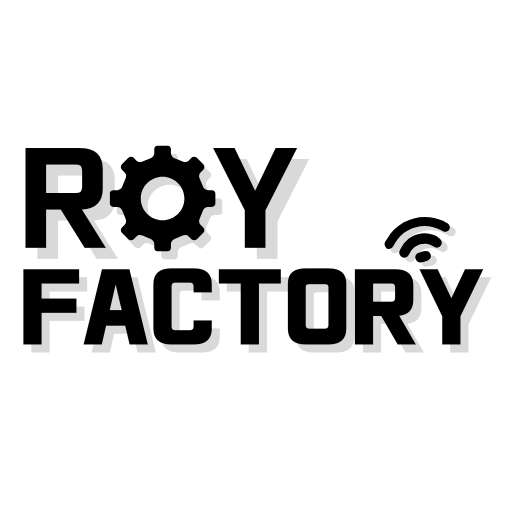Installing Kubernetes: Minikube and kubeadm Setup for Beginners
- Installing Kubernetes: Minikube and kubeadm Setup for Beginners
Installing Kubernetes: Minikube and kubeadm Setup for Beginners
So far, we’ve explored what Kubernetes is, how it works, and why it matters.
Now it’s time to get our hands dirty and install Kubernetes ourselves.
In this post, you’ll learn:
- What installation methods are available
- How to set up Kubernetes easily using Minikube
- How to create a production-style cluster using kubeadm
- Tips for working with cloud-based Kubernetes
1. Why Is Installing Kubernetes Hard?
Kubernetes is a distributed system, not just one program.
You need to install and connect:
- API server
- Scheduler
- Controller manager
- etcd (database)
- kubelet and kube-proxy (on worker nodes)
- Networking plugin
- And more…
But don’t worry — we’ll use beginner-friendly tools like Minikube to make this much easier.
2. Comparing Installation Methods
| Method | Description | Pros | Cons |
|---|---|---|---|
| Minikube | Local single-node cluster | Easy, great for learning | Not for production use |
| k3s | Lightweight Kubernetes variant | Fast, low-resource | Limited advanced features |
| kubeadm | Official tool for real clusters | Realistic, flexible | Requires Linux/VM setup |
| Managed K8s | Cloud-based Kubernetes (EKS/GKE/AKS) | Fully automated | Requires cloud knowledge |
3. Getting Started with Minikube
What is Minikube?
Minikube creates a single-node Kubernetes cluster on your local machine. Perfect for learning and development.
Prerequisites
- OS: Windows, macOS, or Linux
- Virtualization support (Docker or VirtualBox)
kubectlinstalled
Installing Minikube (macOS example)
Using Homebrew:
brew install minikube
Or manually:
curl -LO https://storage.googleapis.com/minikube/releases/latest/minikube-darwin-amd64
chmod +x minikube-darwin-amd64
sudo mv minikube-darwin-amd64 /usr/local/bin/minikube
Start the Cluster
minikube start
Minikube will:
- Create a virtual machine
- Initialize Kubernetes control plane
- Deploy system components (DNS, dashboard, etc.)
Verify the Node
kubectl get nodes
Expected output:
NAME STATUS ROLES AGE VERSION
minikube Ready control-plane 1m v1.29.0
Launch the Dashboard
minikube dashboard
This opens a GUI in your browser to view and manage your cluster visually.
4. Installing Kubernetes with kubeadm
What is kubeadm?
kubeadm is the official tool to bootstrap a production-ready Kubernetes cluster. It’s more complex than Minikube but more realistic.
Recommended Environment
-
2 or more Linux servers (Ubuntu 22.04)
- 1 master, 1+ workers
- containerd as container runtime
kubelet,kubeadm,kubectlinstalled
Installation Summary
1) Prepare the OS
sudo apt update && sudo apt install -y apt-transport-https curl
2) Install containerd
sudo apt install -y containerd
sudo systemctl enable containerd
3) Install Kubernetes tools
curl -s https://packages.cloud.google.com/apt/doc/apt-key.gpg | sudo apt-key add -
Add Kubernetes repo, then:
sudo apt update
sudo apt install -y kubelet kubeadm kubectl
sudo apt-mark hold kubelet kubeadm kubectl
4) Initialize the Control Plane
sudo kubeadm init --pod-network-cidr=10.244.0.0/16
5) Set Up kubectl Access
mkdir -p $HOME/.kube
sudo cp -i /etc/kubernetes/admin.conf $HOME/.kube/config
6) Install Network Plugin (e.g. Flannel)
kubectl apply -f https://github.com/flannel-io/flannel/releases/latest/download/kube-flannel.yml
7) Join Worker Nodes
Run the kubeadm join command shown after initialization on each worker node.
5. Post-Installation Checklist
- ✅ All Nodes show
Readyinkubectl get nodes - ✅ All system Pods are
Running - ✅ DNS works (
coredns) - ✅ Optional: Enable Kubernetes dashboard
6. Installing Kubernetes in the Cloud
If you’re using AWS, GCP, or Azure, consider their managed Kubernetes services:
| Provider | Service | Highlights |
|---|---|---|
| AWS | EKS | IAM support, VPC integration |
| GCP | GKE | Fast startup, good default configs |
| Azure | AKS | Azure DevOps and AD support |
Benefits:
- No manual setup
- Built-in scalability and HA
- Pay-as-you-go billing
7. Bonus: Recommended Tools
| Tool | Use Case |
|---|---|
| Lens | Visual Kubernetes cluster management |
| k9s | Terminal UI for exploring Kubernetes |
| Kind | Run K8s in Docker for CI/testing |
| Okteto | Sync local development with Kubernetes |
Summary
Installing Kubernetes can feel overwhelming — but with the right tools and guidance, you can be up and running in no time.
Here’s what we covered:
| Method | Best For |
|---|---|
| Minikube | Learning on your local PC |
| kubeadm | Building real clusters |
| EKS/GKE/AKS | Production cloud workloads |
What’s Next?
Now that your cluster is live, it’s time to learn how to control it using kubectl — the command-line tool that every Kubernetes developer must know.
